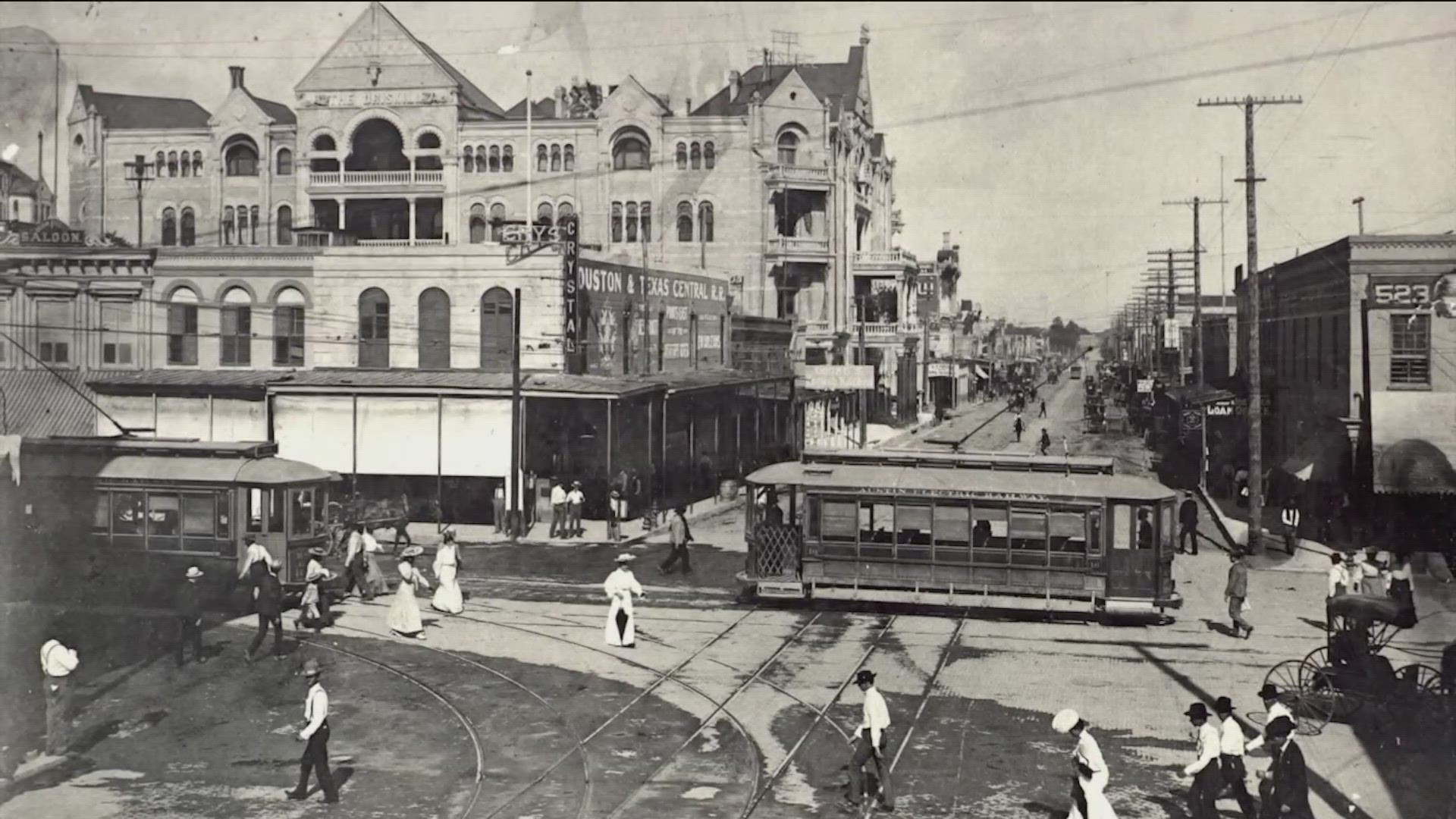AUSTIN, Texas — Those streets you drive on in Austin? Try to imagine them before cars and trucks cluttered the roads. Imagine a time when the only way to get around – other than on foot or horseback – was to pay a nickel and get a ride on a streetcar.
As early as the 1870s, there were no tracks laid yet and streetcars ran on “mule” power. But by 1900, mile after mile of shiny new steel rails crisscrossed most of the main roads in the city.
The streetcars ran on electricity generated by the big dam located on Lake Austin, a few miles north of the present-day Tom Miller Dam on Redbud Trail. Electric power lines adorned the rails and provided the juice that kept the streetcars humming. But after the dam collapsed in the Great Flood of 1900, it was back to mule power for a while until electricity again flowed across Austin.
By the early 1900s, tracks ran as far north as the Hyde Park neighborhood and stretched down the Congress Avenue Bridge into South Austin.
Streetcar travel was not without its hazards. According to the Austin History Center, it was common to see a streetcar lying on its side after it jumped the tracks, usually on a curve and likely the result of a streetcar driver who went too fast.
But streetcars began to lose their dominance as more Austinites demanded their own form of transportation: automobiles. Austin History Center photos from the era show the growing presence of cars parked along Congress Avenue as streetcar ridership declined.
Then came the buses.
When the last streetcar made its final run on Congress Avenue in 1940, there was a big celebration at Sixth Street and Congress as Austin residents cheered the victory of buses and personal vehicles over the noisy and crowded street cars.
The tracks on Congress Avenue were removed in the early 1940s, and much of the steel was repurposed for Allied efforts in World War II.
Today, no matter how hard you look, historians say you won’t find any remnants of streetcar tracks in Austin.

